If you are planning a family trip to Japan for all ages, know you will not be disappointed. With activities ranging from thrilling theme parks to serene temples, a Japan vacation is sure to please every member of the family. The cities are busy but clean; there’s very little crime, the elderly are respected, and once you understand the cuisine there are few worries about what to eat. Here are some of the best tips to help plan your Japan itinerary.

*Disclosure: This post may contain affiliate links, which means we may receive a commission if you click a link and purchase something that we have recommended. Please check out our disclosure policy for more details. Thank you for your support!
Table of Contents
Where is Japan?
Japan is located in Asia, close to China, Korea, and Russia. It’s actually an archipelago consisting of 6000 islands. Roughly 3000km from end to end and 1000km wide, it’s about the same size as the state of California.
It is impossible to see Japan in one short trip which is why most first-time visitors focus on what’s known as the Golden Route – Tokyo to Kyoto (and/or Osaka). These three cities are located relatively close to each other on the main island called Honshu.
How to Get to Japan
To follow the Golden Route, there are three main airports you can fly into. If you start your trip in Tokyo you can fly into Narita (NRT) or Haneda (HND). Narita is around 60km outside of Tokyo.
From here, the best way to get into the city is the N’Ex (or Narita Express) train which takes around an hour to reach Tokyo main station or the tourist hub of Shinjuku.
An alternative option is The Limousine Bus service which drops directly at a number of city center hotels and other locations and takes about 2 hours to Shinjuku.
Haneda is 30km outside of Tokyo and the city is quickly accessed by monorail which takes 15 minutes to reach Shinagawa station from which you can board other trains to your hotel.
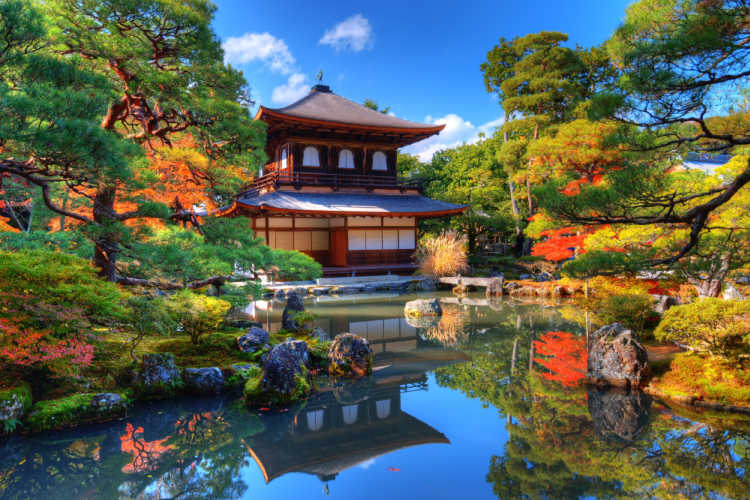
If you’re traveling with older adults, smaller children, or a lot of luggage, easier options are the Limousine Bus which drops off outside a number of city center hotels and takes about an hour, or official airport taxis which can seat up to five in a wagon style. These charge a flat rate to the city and take about 30 minutes. You can also book meet-and-greet cars.
If you’re flying in or out of Osaka, you will use Kansai Airport (KIX). This is 50km from the city. Numerous train services connect the airport to the main stations in Osaka, but, again for a family, the easiest way to reach your hotel is the Limousine Bus which takes 45-60 minutes to reach the main tourist areas.
It’s best to book all the bus tickets before you leave home.
When is the best time to visit Japan?
To see the Golden Route at its best, visit from March to May (trying to avoid the main public holiday of Golden Week which stops the country for 10 days around April 28 each year); or October and November. These times are when temperatures are moderate and rain is minimal.
You can travel to Japan during other seasons, but June can be rainy and July and August are hot and humid. August and September carry the highest risk of typhoons and while Japan takes these in stride, they can affect sightseeing. The winter months in Tokyo and Kyoto aren’t exceptionally cold, but snow is a possibility.
Transportation in Japan
Walking allows you to soak up the atmosphere of each city, but the main three Golden Route cities each have comprehensive and easy-to-use underground and train systems. Signs and maps are in English and you can buy prepaid cards called a Pasmo or a Suica which saves you from trying to buy individual tickets. Even with the trains, don’t underestimate how much you’ll be walking when exploring Japan as even getting in and out of stations can be a trek.
Taxis are clean, safe and always run on the meter, but they aren’t the cheapest way to get around. If you do get one, one of the top tips for first-time visitors to Japan is not to don’t touch the back doors – they open automatically.
Getting around the country is best done by Shinkansen (aka the Bullet Train). These sleek white trains crisscross the country at 320kph via a network that’s incredibly punctual, clean, and quiet.
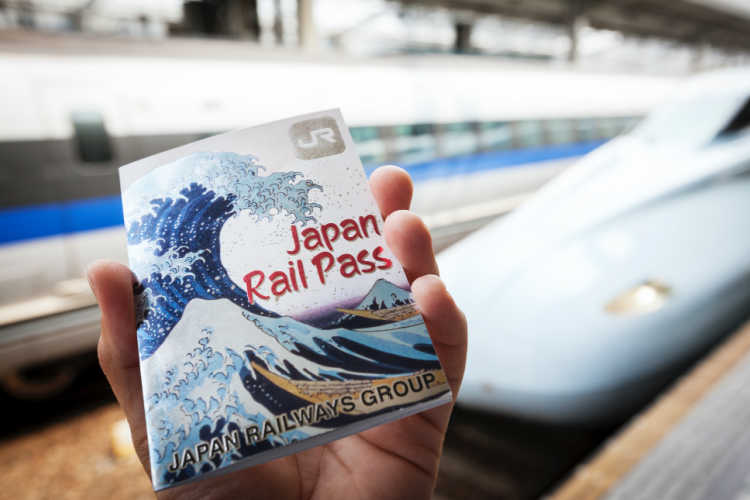
It’s not an inexpensive way to travel, so if you’re traveling to and from Tokyo to Osaka and Kyoto and are planning at least one other day trip, the most economical option is to buy a ticket called the Japan Rail Pass. You can check that the Japan Rail Pass is worth it for your trip here.
Cars can be rented by visitors to Japan, but very busy cities, limited parking, and expensive toll roads don’t make it the easiest or cheapest option. If you’re not visiting rural areas, the Shinkansen really is the best way to travel between the major cities.
CLICK HERE TO BUY YOUR JR PASS
Things to Know Before Visiting Japan
If you’re going to buy a Japan Rail Pass, you’ll need to buy this outside of Japan. Companies like JRPass.com, mail the pass to you so order 2-4 weeks before you travel to make sure it arrives in time.
If anyone in your party is on regular medication, it’s important that you check well in advance of your trip that it is allowed into Japan. Some medicines, primarily those containing stimulants, are not allowed (and these include some everyday medications like Vicks Inhalers or cold remedies). Other medications may need an import permit called a Yakkan Shoumei that you need to apply for in advance. This page explains everything very clearly.
There are also some attractions it’s best to book in advance in Japan. These include Sumo tickets, if there’s a major tournament on when you’re in the area; tickets for Tokyo Disneyland or Tokyo DisneySea, Universal Studios in Osaka, and the famous Studio Ghibli museum (find an extensive list with details of where to get tickets on this list of great first time tips).
Cash and Spending Money in Japan
Despite its high-tech image, Japan is still very much a cash-based society. You can pay for your hotel and major purchases with a credit card, but, for day-to-day transactions in restaurants or smaller shops, cash is king.
The Japanese currency is called the yen and it comes in 1, 5, 50, 100, and 500 yen coins and 1000, 2000, 5000, and 10,000 notes. It’s a good idea to have enough cash for 2-3 days to allow you to get your bearings.
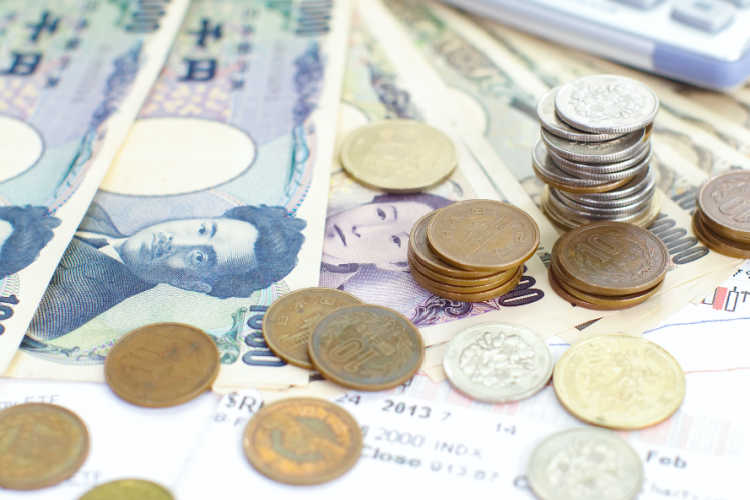
When you need to withdraw more money, don’t do this at a bank ATM. Japanese banks don’t recognize foreign cards. Instead, go to an ATM in one of the thousands of convenience stores around like 7-11, Family Mart, or Lawson.
Depending on where you live, this might sound like dubious advice, but these stores (known locally as konbini) are the lifeblood of Japan. They sell tasty takeaway meals, tickets for attractions, and many other services and it’s perfectly safe to use their ATMS.
Healthcare in Japan
Healthcare in Japan is modern but it is not free for tourists so you will need to be covered by travel insurance.
One issue might be finding a doctor that speaks good English so it’s best to ask your hotel for a recommendation. This page by the Japan National Tourism Organisation is very helpful. It can help you find the nearest medical center, explains the names of common medications in Japanese, and offers other useful health advice. In an emergency, the number to call is 119.
What to Pack for Japan
Ideally, pack as lightly as possible to avoid struggling with suitcases on trains and at stations. Big cases can also take up quite a lot of room in a small Japanese hotel room.
The only two things you must pack are comfortable walking shoes and lots of clean socks – as you may have to take your shoes off in temples and even some restaurants.
One small thing that can make a real difference for less mobile adults is packing a small lightweight shoe horn that makes slipping shoes on and off easier (you’ll find more specific advice in this Japan packing list)
If you’re traveling with children that use a stroller make sure you have one that’s easy to fold up for stairs, restaurants, and hotel rooms.
Destination Challenges
While many Japanese people speak some English, they may not want to do so if they don’t think they will be understood. A smile, gestures, and the odd Japanese phrases like arigato gozaimasu (thank you very much) and sumimasen (excuse me or sorry) go a long way. Most road signs and station signs are in English and restaurants in tourist areas usually have English menus, or models of plastic food outside, that will help you navigate the food offerings.
If you’re planning a Japan trip with a large group, know that accommodations can be a bit tricky. Make sure you check the room size carefully before you book it – some Japanese hotel rooms can be as little as 16 square meters. Some traditional-style inns called ryokan may not allow children so check this before booking.
There is a small risk of earthquakes. Japan is very prepared for this, but do familiarize yourself with the emergency procedures listed in your hotel room.
Things to do in Japan with Family
Things to do in Tokyo
Tokyo Disneyland and Tokyo DisneySea
Rides, shows, characters, and merchandise you won’t find in the US make the parks a must-visit for many families. On busy days lines can be 90-120 minutes for some rides so try and avoid weekends or public holidays when possible.
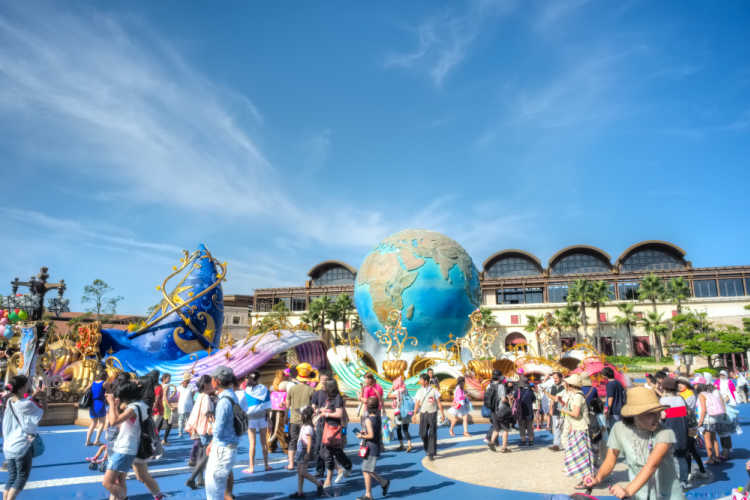
Harajuku
This buzzy district has plenty of shops and fun food trends to entertain teens – but is close to the venerable Meiji Shrine and Yoyogi Park for any older sightseers in your party.
Odaiba
This island district has a little something for everyone. Small children will love LEGOLAND, older kids can enjoy the robots and other technology at the National Museum of Emerging Science and Innovation. Teens will love the Instagram-sensation Team Lab Borderless, while older adults might want to see the nearby new Toyosu Fish Market.
There are also plenty of things to do in Tokyo Japan at night if the adults in the group want to experience local nightlife! And we have another article featuring our favorite family activities in Tokyo to help with your trip.
Things to do in Kyoto and nearby
Otagi Nenbutsu Temple
Kyoto is a city of temples, but while most of them might not contain much to entertain small children, this one will please all ages. Each of its thousands of stone carvings is different. Try and find the ones carrying a teddy bear or tennis racket!
Arashiyama
This district includes the famous Bamboo Forest every teen needs on their social media; the Monkey Park will delight smaller children, while adults will love the scenery from the Sagano Romantic Train.
Nara
This is a short train trip from Kyoto but it’s full of interesting temples, a small town with shops and restaurants – and a lot of wild deer who love to bow for deer cookies!

Things to do in Osaka
Transportation from Kyoto to Osaka takes 15 minutes on the Shinkansen bullet train. It takes about 2.5 hours to reach Osaka from Tokyo. There are plenty of fun things to do in Osaka with kids, but these are some of the highlights.
Abeno Harukas
The tallest building in Japan has amazing views from the 58th-floor observatory but also an art museum and a busy department store.

Momofuko Ando Instant Ramen Museum
Learn all about the food that has fed thousands of students over the years! Each member of your family can also make their own personalized instant noodle pot!
Dotonbori
This bar and restaurant district might not look much during the day, but at night its lit-up signs are one of Japan’s most memorable sights. If you don’t feel like walking around with the crowds, the short Tombori River Cruise will sail you right past some of the main sights.
Family-friendly restaurants in Japan
Sushi Trains: The easiest, most affordable – and most fun way for the whole group to try sushi. You’ll find plenty of cooked fish and vegetable options for those not quite ready for raw fish. The Sushi Go Round chain in Tokyo adds a little something as they deliver dinner via a tiny replica bullet train.
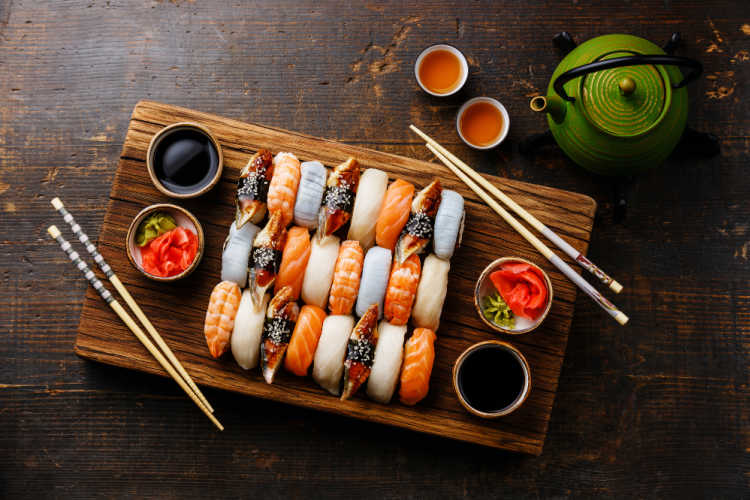
Café Restaurant Gusto: This is the best known of a genre of restaurants in Japan called Family Restaurants. These are specifically designed for families to eat together. As such, they have larger tables, high chairs, and something for everyone on the menu.
Mos Burger: If it gets to the point when someone just wants a burger, this Japanese burger chain at least allows you to eat like a local. Other good chains for a quick, easy meal with a guaranteed English menu include Yoshinoya, Sukiya, and curry chain Coco Ichiban.
About the Author: Helen Foster is a journalist, author, and blogger. Her specialist Japan site Japlanease aims to help make planning your trip to Japan easier.

